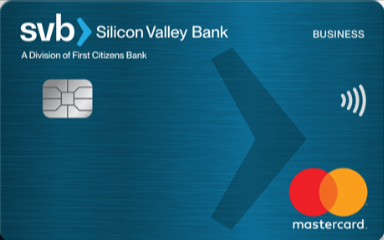SVB Innovator Card* vs. Brex Card*
The Brex Card* is a direct competitor to the SVB Innovator Card*, mainly targeting the same market. It doesn’t require a personal guarantee and offers dynamic credit limits in response to your cash flow. You’ll earn 7 points per dollar on rideshare, 4 points per dollar on travel booked through Brex Travel, 3 points per dollar on restaurants, 2 points per dollar on recurring software and 1 point per dollar on everything else. Note that you only earn points on purchases with U.S. merchants.
The Brex Card* comes with many business benefits and discounts on business services, such as $5,000 in AWS credits, 30% off your first 12 months of QuickBooks, up to 50% off UPS shipping and 25% off 12 months of Slack paid plans among others.
If you qualify for the Brex Card*, you’ll appreciate the robust business features and earning potential that are atypical for a corporate card without an annual fee. You’ll likely need to be flush with cash to qualify, but even venture-backed LLCs with low cash reserves could qualify, so getting approved might be possible for your business.
SVB Innovator Card* vs. Ramp Business Card
Like the SVB Innovator Card* and the Brex Card*, the Ramp Business Card is a corporate card that doesn’t require a personal credit check and offers a flexible credit limit based on revenue or dollars raised. It’s a charge card, but it allows for a 30-day payback.
Ramp takes automation to the next level and streamlines your finance operations with apps like QuickBooks, Stripe and Slack. You’re eligible for up to $350,000 in partner rewards, which includes everything from a three-month free trial to Asana to $2,500 in OpenAI API credits.
The value of the Ramp card is in the opportunity to save time and money. Ramp analyzes your spending to identify areas where you can spend less while automating accounting to help improve efficiency. Although the SVB Innovator Card* offers standard earnings on spending, the Ramp Business Card might be a better fit if you value savings over rewards.
SVB Innovator Card* vs. Ink Business Cash® Credit Card
If you’d rather have a traditional business card that offers an extended intro APR period, look no further than the Ink Business Cash® Credit Card. This card is better for low spenders—you can earn 5% cash back on the first $25,000 spent in combined purchases at office supply stores and on internet, cable and phone services each account anniversary year and 2% cash back on the first $25,000 spent in combined purchases at gas stations and restaurants each account anniversary year. Earn 1% cash back on all other purchases.
You can take advantage of a 0% introductory APR on purchases for 12 months, then a standard APR of 17.99% – 25.99% variable applies for purchases and balance transfers. A balance transfer fee of either $5 or 5% of the amount of each transfer, whichever is greater, applies. This can be very helpful if you have any sizable upfront business expenses that you need extra time to pay off. Even if you don’t start out with a credit limit as high as you’d like, you’ll be evaluated for an increase every six months. With no annual fee, it costs nothing to hold and is basically all upside.
When it comes to redemptions, the Chase Ink Business Cash offers a solid cash-back rate, or it can be paired with the $95 annual fee Ink Business Preferred® Credit Card for increased value through Chase Travel℠. Ultimate Rewards® points from the Ink Business Preferred can be transferred to airline and hotel partners at a ratio of 1:1.
The SVB Innovator Card* and Ink Business Cash® Credit Card are both solid cards but fulfill very different purposes. If you don’t mind a charge card, the SVB option could provide a lot of value for your business. If not, this is one of the best Chase business cards to consider.

